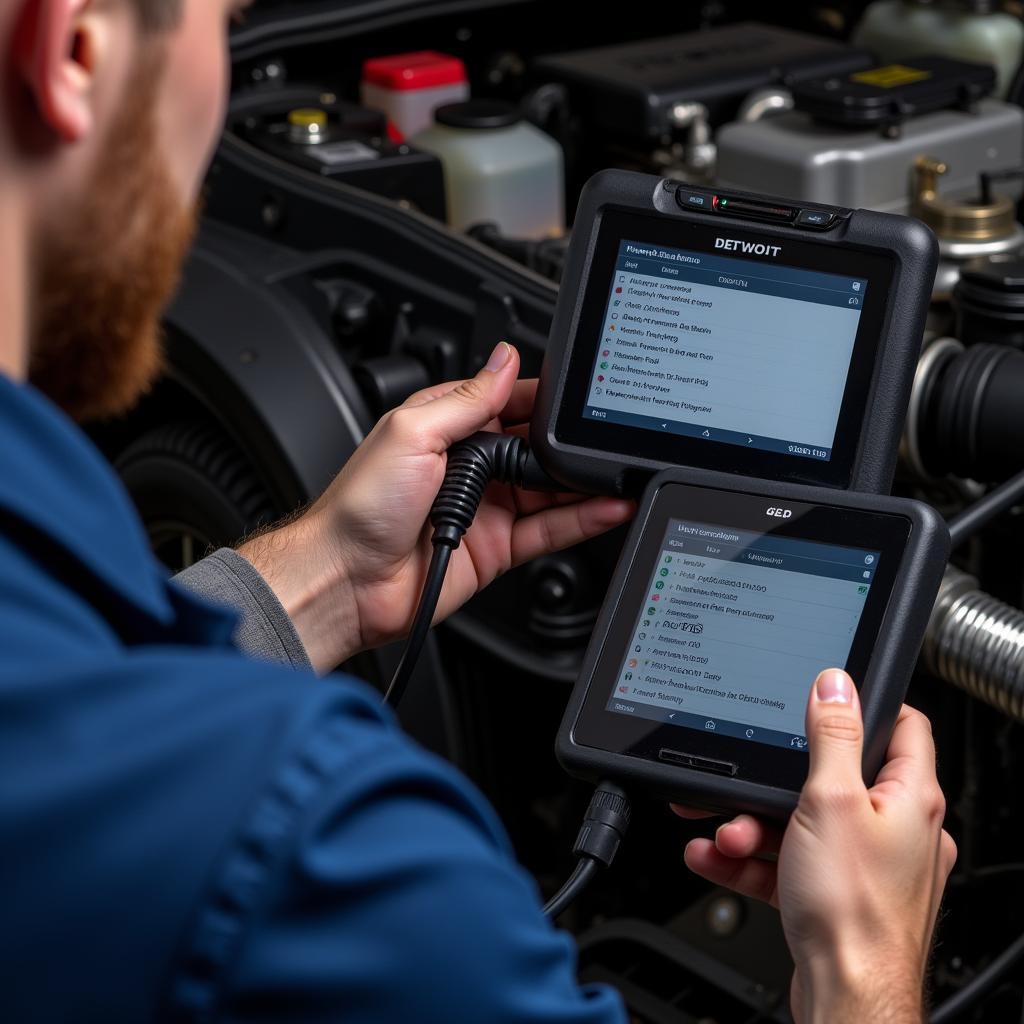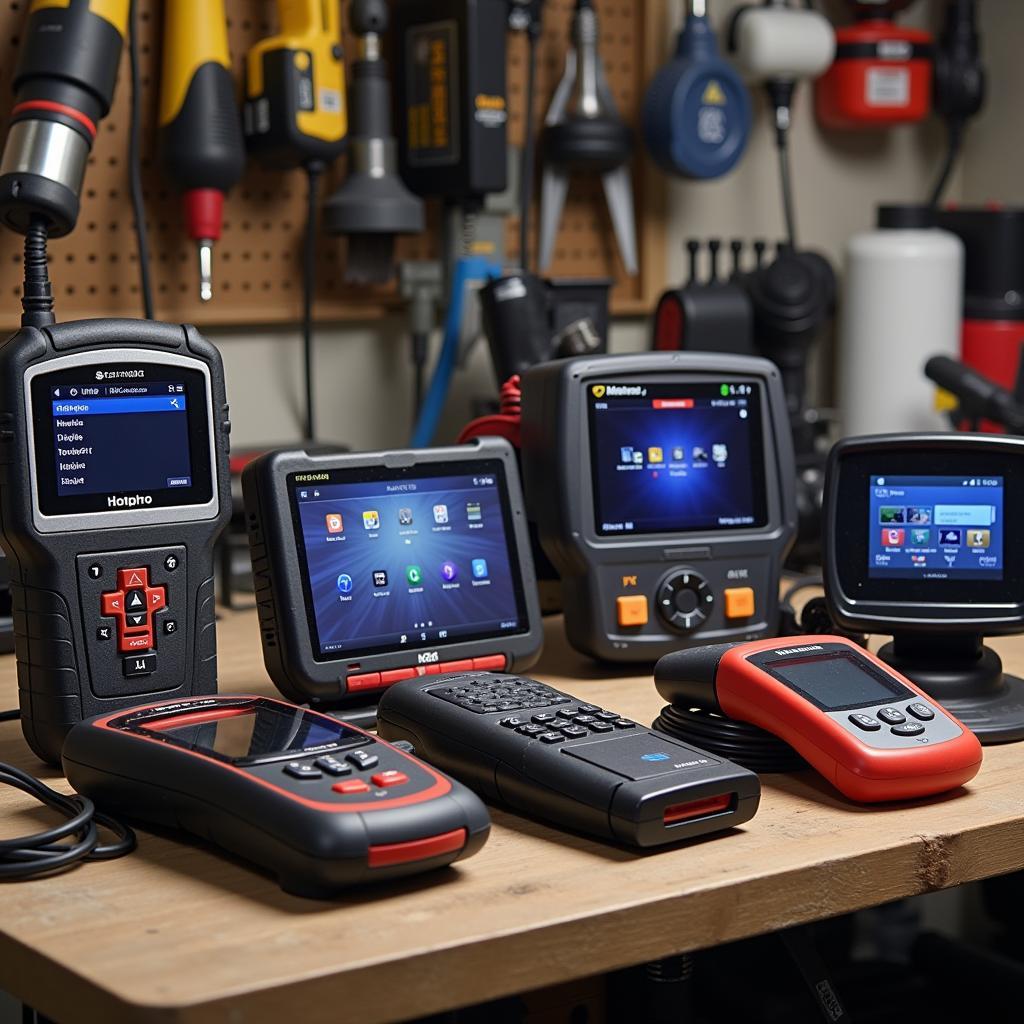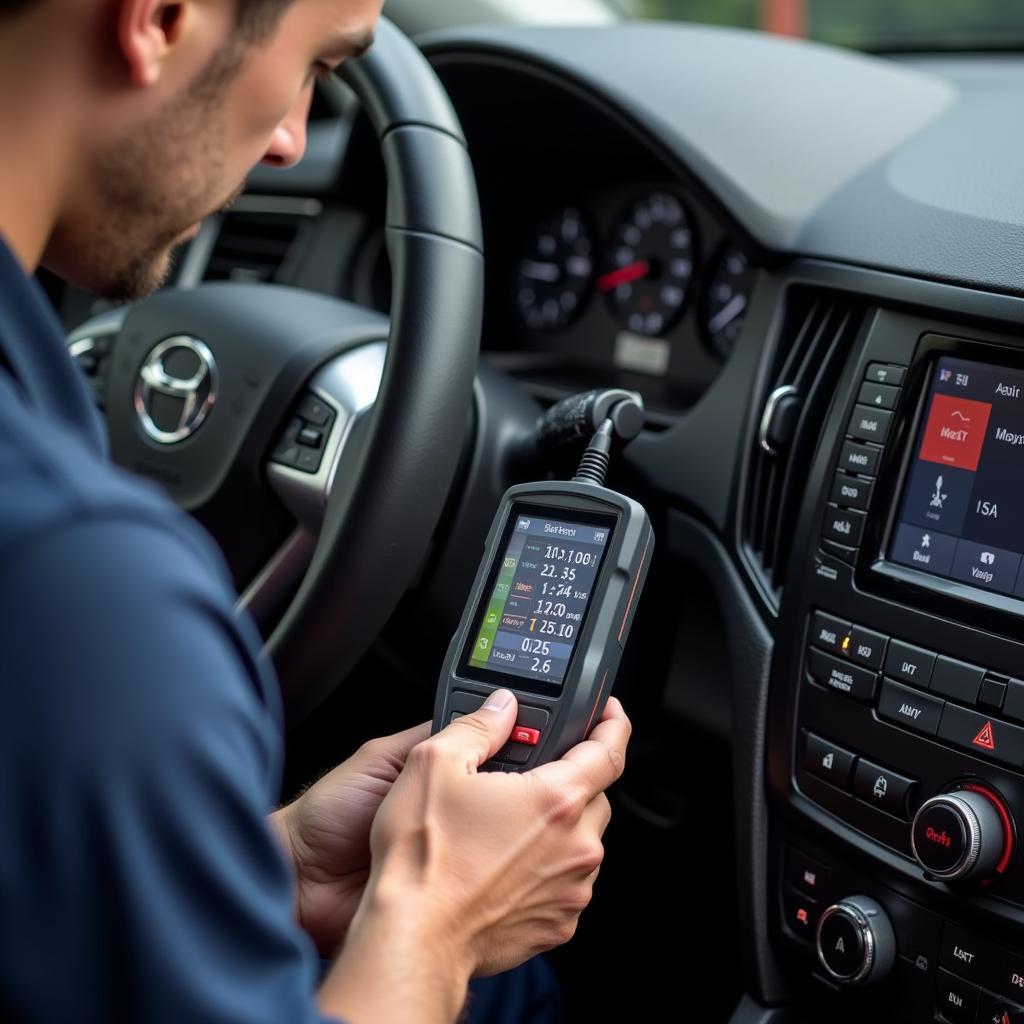A Car Scanner For Engine And Transmission is an essential tool for any car owner, mechanic, or car enthusiast. Whether you’re dealing with a check engine light, transmission problems, or simply want to monitor your vehicle’s performance, a car scanner can provide valuable insights into your car’s inner workings.
 Car Scanner Diagnosing Engine and Transmission
Car Scanner Diagnosing Engine and Transmission
Understanding Car Scanners: More Than Just Code Readers
While often referred to as OBD2 scanners or code readers, car scanners for engine and transmission offer much more than just reading and clearing diagnostic trouble codes (DTCs). These sophisticated devices act as a window into your car’s computer system, allowing you to access a wealth of data about the engine, transmission, and other critical components.
Here’s what a good car scanner for engine and transmission can do:
- Read and Clear DTCs: Identify the source of the check engine light or other warning lights.
- View Live Data Stream: Monitor real-time sensor data such as engine RPM, coolant temperature, oxygen sensor readings, transmission fluid temperature, and more.
- Perform Actuator Tests: Command various actuators to test functionality, such as turning on the fuel pump or cycling the EVAP system.
- Access Advanced Functions: Depending on the scanner and vehicle, you might be able to perform functions like ABS bleeding, airbag system reset, and electronic parking brake service.
 Various Car Scanners on a Workbench
Various Car Scanners on a Workbench
Choosing the Right Car Scanner for Your Needs
With a plethora of car scanners available on the market, choosing the right one can be overwhelming. Consider these factors:
1. Your Budget: Basic code readers can cost as little as $20, while professional-grade scanners can reach thousands of dollars.
2. Your Skill Level: Beginner-friendly scanners offer simple interfaces and basic functions, while advanced scanners provide more in-depth data and features.
3. Vehicle Compatibility: Ensure the scanner supports your vehicle’s make, model, and year. Some scanners are universal, while others are vehicle-specific.
4. Desired Features: Determine the functionalities you need, whether it’s basic code reading, live data viewing, or advanced functions.
For most car owners, a mid-range scanner with live data capabilities and some advanced functions offers a good balance of features and affordability.
Benefits of Using a Car Scanner for Engine and Transmission
Investing in a quality car scanner for engine and transmission can save you time, money, and frustration in the long run. Here’s how:
- Early Problem Detection: Identify potential issues before they escalate into major repairs.
- Accurate Diagnosis: Pinpoint the root cause of problems, avoiding unnecessary guesswork and part replacements.
- Cost Savings: Diagnose and potentially fix problems yourself, saving on expensive mechanic bills.
- Improved Vehicle Performance: Monitor vital engine and transmission parameters to ensure optimal performance.
- Greater Control Over Your Vehicle: Gain a deeper understanding of how your car works and how to maintain it.
Common Uses of a Car Scanner for Engine and Transmission
Here are some common scenarios where a car scanner can be incredibly useful:
1. Check Engine Light Diagnosis: Determine why the check engine light is on and address the underlying issue.
2. Transmission Troubleshooting: Diagnose problems like slipping gears, rough shifting, or delayed engagement.
3. Sensor Monitoring: Track the performance of vital sensors like the oxygen sensor, MAF sensor, and throttle position sensor.
4. Performance Tuning: Monitor engine parameters to fine-tune performance modifications.
5. Emissions Testing: Check if your vehicle’s emissions systems are functioning correctly before an emissions test.
Tips for Using a Car Scanner Effectively
- Read the Manual: Familiarize yourself with the scanner’s features and how to use them properly.
- Connect to a Clean OBD-II Port: Ensure the port is free of dirt and debris for a secure connection.
- Start with the Basics: Begin by reading and clearing DTCs before delving into live data or advanced functions.
- Research Codes Thoroughly: Don’t jump to conclusions based solely on the code description. Research the code online or in a repair manual to understand its potential causes.
- Seek Professional Help When Needed: If you’re unsure about a diagnosis or repair, don’t hesitate to consult a qualified mechanic.
“Using a car scanner effectively empowers car owners to take control of their vehicle’s health,” says John Smith, Senior Automotive Engineer at ScanToolUS. “With the right knowledge and tools, you can diagnose and potentially fix problems yourself, saving time and money in the process.”
Conclusion
A car scanner for engine and transmission is no longer a luxury but a necessity for anyone who wants to stay on top of their vehicle’s maintenance and performance. By understanding the capabilities of these devices and how to use them effectively, you can empower yourself to make informed decisions about your car’s care.
Need help choosing the right car scanner for your needs? Contact ScanToolUS at +1 (641) 206-8880 or visit our office at 1615 S Laramie Ave, Cicero, IL 60804, USA.

